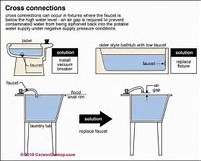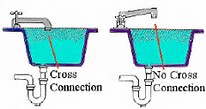-
Community
-
Column 1
- About
- Community Overview
- History
- Community Profile
- Chamber of Commerce
- City Maps
- Newsletters
- Request to Reserve a City Facility
Column 2
- Events and Activities
- City Calendar
- Parks, Trails & Facilities
- Parks, Trails & Facilities Directory
- Library
Column 3
- Schools
- School District
- Current Projects
- Public Safety
- Police
- Fire
- FAQs
-
-
City Services
-
Column 1
Column 2
- Departments
- City Administrator
- Assessor
- Building & Zoning
- City Clerk
- Engineer
- City Treasurer
- Fire & EMS
Column 3
-
-
Businesses
-
Column 1
Column 2
Column 3
-
-
Resources
-
Column 1
- Alerts and Notifications
- Email Subscriptions
- Events and Meetings
- Agendas and Minutes
- Calendar
- Maps
- GIS Map
- City Maps
Column 2
- Contact the City
- Submit a Request or Concern
- Staff Directory
- Code of Ordinances
- Documents and Forms
- Documents and Reports
- Forms and Applications
Column 3
-
Cross Connection Control and Inspections
Something you may WANT TO KNOW!
Your water can become contaminated if connections to your plumbing system are not properly protected?
The purpose of the local Cross Connection Program, as required by State Plumbing Code and Regulations, is to ensure everyone in the community has safe, clean drinking water.
It’s Public Safety...
To avoid contamination, backflow preventers are required by state plumbing codes wherever there is an actual or potential hazard for a cross connection. The Wisconsin Department of Natural Resources requires all public water suppliers to maintain an on-going Cross Connection Control Program involving public education, onsite inspections, and possible corrective actions by building owners.
Throughout the year the City Of Elkhorn Water Utility will contact residents in certain neighborhoods to inspect the water lines and cross connections and make sure there is no backflow into our drinking water supply lines. We are required to inspect a set quota amount of residents and businesses by the Public Service Commission of WI (PSC). For more detailed information please see our brochure and information provided below or call our Utility Operations Center at 262-723-3138. We are here to serve you and provide you with safe, clean drinking water!
What is a Cross Connection? The Safe Drinking Water Act of 1974 established national standards for drinking water. State and local governments or water utilities are charged with enforcing these standards, protecting the public water supply, and delivering safe drinking water. Yet cross connections can contaminate drinking water without anyone realizing it.
A cross connection risks contamination of building water piping or municipal water supply with bacteria. A cross connection is a dangerous situation where waste water may enter and contaminate the supply water.
A cross connection can occur in many places. One example is where a laundry tub has a faucet below the top of the laundry tub. If the faucet enters the tub through the wall, it is possible that when the tub is filled, the faucet will be submerged. If this happens, the waste water in the tub may back up into the drinking water through the faucet if the supply piping is being drained. The solution to plumbing cross connections is to raise the faucets above the top of a tub or basin, creating an air gap between the faucet and water in the tub. Cross connections are avoided through the use of an overflow.
In bathtubs, for example, where the faucets may enter through the wall of the tub below the top, an overflow provided below the faucets will prevent a cross connection. Older bath sinks may also form a cross connection if the tub spout is below the flood rim of the fixture.
Other examples of cross connections in buildings include water softeners, washing machines, and dishwashers connected to a building drain without an air gap and water powered backup sump pump systems that use municipal water pressure and a vent to evacuate water from a building or its sump pit.
Some plumbing fixtures necessarily create a situation which could lead to a cross connection. A bidet is a good example of this. A bidet has a water supply at the bottom of the bowl. This allows water to be directed up in a spray from the bottom center of the bowl. There is, of course, the potential for waste water in the bowl to get into this supply water. A special device (vacuum breaker) prevents water from flowing back into the supply plumbing.
While cross connections are normally avoided during original plumbing work, home handyman changes can create them. Careless use of the house plumbing system can also create a cross connection.
Care should be taken, for example, to avoid placing a garden hose in a position to allow waste water to flow back into the supply plumbing system. For example, if the hose is left in a pail of water, it is possible for the contaminated water to flow back through the hose into the drinking water. This may happen if the house water supply is shut off and partially drained for some reason, while the hose is in the pail. Back-flow preventers (like the atmospheric vacuum breaker in the illustration) on the hose bib can prevent this. Cross connections by garden-hose plumbing also occur when someone improperly connects a garden hose directly to a sewage waste pipe for any reason. We have found garden hoses connected in this fashion as building piping drains, water softener drains, boiler drains, etc. Back-flow preventers on the hose bib can prevent this.
Other areas checked for cross contamination are the clothes washer plumbing, connection leads to the sewage backup into the washing machine and water heater cross connections.
RESOURCES:
WI Dept. of Natural Resources:
Environmental Protection Agency:




